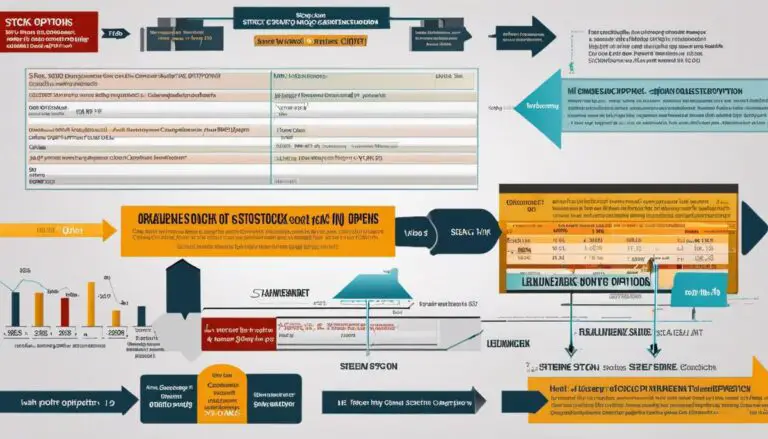Investing has long been a proven approach to generate wealth, with numerous strategies available for different individuals based on their risk tolerance, financial goals, and market knowledge. One such methodology of investing centred on creating a steady stream of income is known as Income Investing. This approach, which enjoys substantial popularity among seasoned investors, primarily focuses on securities yielding predictable and regular income. Whether you’re a newbie with a recently opened brokerage account or an experienced investor planning to adjust your portfolio, having a profound understanding of Income Investing is paramount. This plunge into the principles of Income Investing expounds on its core elements, the indispensable role of income-generating assets, dividends’ critical contribution, and the comparison between Income and Growth Investing.
Understanding Income Investing Strategy
The Power of Income Investing: Maximizing Profits From Your Everyday Investments
Even the savviest investors know that building a solid financial portfolio is no easy task. Yet, there’s a strategy that not only offers a healthy return but also a steady flow of funds you can use for everyday use or reinvestment: income investing. And while it may not make the front page, income investing matters. Here’s why.
Income investing is an investment strategy where an individual invests their capital into various securities that offer periodic earnings. These earnings can be in the form of dividends, royalties, distributions, interest payments, or rental income. So what makes it so attractive? The draw is in the steady stream of income these investments yield, providing a form of financial safety net that helps weather the ups and downs of financial markets.
There’s a misconception that income investing is simply for the risk-averse or for those nearing retirement. However, this oversimplification may deter many from its considerable benefits. When adopted alongside other investment strategies, income investing is a veritable tool in navigating the fluctuating financial landscape.
One of the crucial reasons income investing matters is its ability to generate cash flow. Rather than waiting for the value of a portfolio to appreciate over time, an income investor gains regular returns. This liquidity provides funds that can easily be converted and employed, enabling the investor to react quickly to new money-making opportunities, mastering the art of unforeseen market changes.
Moreover, income investing can act as a buffer during periods of economic uncertainty. When market value dips, the reliable income from these investments serves as a cushion, assisting in mitigating potential losses. Furthermore, the ability to reinvest this income back into the portfolio can create a compounding effect, turning a regular stream of income into a sizeable financial gain in the long run.
No investment strategy is without risks. It’s essential to note that while income stocks usually pay dividends consistently, there’s no guarantee they always will. A company’s financial situation can change, impacting dividend payment. Due diligence is essential, and part of that due diligence means diversifying your portfolio across asset types and industries—an effective way to spread risk while maintaining consistent returns.
The secret to successful income investing is not to merely chase the highest yields but to focus on quality investments with dependable income. By identifying stocks with a track record of stable dividends or bonds with the highest ratings, investors can secure their financial future and enjoy peace of mind along with returns.
When adopted correctly, income investing becomes more than just a means for healthy returns—it serves as a catalyst for financial independence, boosting an investor’s ability to innovate and transform their financial portfolio in the journey to wealth creation. So next time you hear about the latest stock or trend, remember: there’s power in patient and consistent investing—there’s power in income investing. Don’t leave it off your radar. Your portfolio will thank you.

Income Investing Assets
Delving deeper into the world of income investing, several assets come into focus. These key assets, namely bonds, dividend-paying stocks, real estate, mutual funds, ETFs, and certificates of deposit (CDs), serve as the engine for generating the desired income. Each asset comes with its unique set of features and risk profile, making knowledge about them a must-have for any savvy investor.
At first glance, bonds may seem simplistic. They essentially represent loans that investors make to issuers, typically governments or corporations. In exchange, bondholders receive periodical interest payments, culminating in the return of the principal upon maturity. With relatively predictable income stream, and inherent safety due to higher priority during liquidation, bonds form an essential part of an income portfolio. However, the downside is a potentially lower return compared to other assets, and interest rate risk, since bond prices and interest rates are inversely correlated.
Another key asset is dividend-paying stocks. Unlike bonds, stocks give investors a share in the company and a claim on its earnings. Companies distribute a portion of these earnings to shareholders in the form of dividends. Typically, well-established companies with consistent profitability opt for this approach. These stocks can provide regular income in addition to potential for price appreciation, striking a balance between risk and reward. However, though dividends may provide a steady income stream, there’s no guarantee they’ll always be paid.
Real estate is yet another potent asset in income investing. Commercial and residential properties can generate rental income while potentially appreciating in value. Real estate also offers some inflation protection as rents can escalate over time. Notably, Real Estate Investment Trusts (REITs) offer the perks of property ownership without the associated management hassles. The downside? Real estate markets are historically cyclical, making timing of entry and exit key to profitability.
Mutual funds and Exchange-Traded Funds (ETFs) are pooled investment vehicles popular among income investors. These funds contain a diverse array of income-generating assets, providing instant diversification and professional asset management. Particularly, ETFs have gained popularity due to their intra-day tradability. Income from these funds can be very steady when the portfolio is diverse across industries and geographies.
Certificates of deposit (CDs), serve as relatively risk-free, income-generating instruments issued by banks with a specific, fixed term. CDs offer a higher interest rate than a regular savings account and are insured by the FDIC, enhancing their safety profile.
To wrap up, income investing isn’t a one-size-fits-all strategy. Despite having the same goal – generating income – investors need to consider their risk tolerance, financial goals, and market comprehension to tailor their income portfolio. With smartly diversified investments across these key assets, income investors stand to build resilient income portfolios poised for sustainable growth. After all, in income investing, the watchword isn’t just income, it’s regular and dependable income.

Using Dividends in Income Investing
Capitalizing on dividends as part of an effective income investing strategy is a tactic many experienced investors and financial gurus swear by. Dividends offer a consistent and comparatively stable income stream, particularly when invested in high-quality, dividend-paying stocks.
To capitalize on dividends, several strategies can be employed. Predominantly, investors usually opt to reinvest dividends, purchase high-dividend yield stocks, or strike a balance between growth and income stocks.
Firstly, dividend reinvestment is one of the most potent tools an investor can utilize. By reinvesting dividends, investors can purchase additional shares of a company, thereby earning more dividends in the future, creating a cyclical and fruitful process. Thanks to the magic of compounding, this can significantly increase the value of one’s investment over the long term. Most brokerages offer automatic dividend reinvestment plans, which facilitate this process and require minimal effort from the investor.
Purchasing high-dividend yield stocks is another strategy savvy investors employ. High-dividend yield stocks are those that have a higher dividend payment relative to their market price. While high-yield stocks often indicate that the company distributes a large portion of its earnings to shareholders, savvy investors should not rely solely on this strategy. High yields could also signify a company in distress. Therefore, comprehensive research and regular monitoring of stocks are crucial.
Striking a balance between growth and income stocks in one’s portfolio is a more sophisticated strategy, but can work wonders if appropriately utilized. Growth stocks are those from companies that are expected to grow significantly faster than other stocks, while income stocks are those that pay regular dividends. By maintaining an optimal mix of these stocks, investors can enjoy both capital appreciation and consistent dividend payouts.
Furthermore, investors may also consider dividend-focused ETFs and mutual funds, which can diversify exposure to dividend-paying stocks, thereby spreading the risk and offering a more consistent income stream. Similarly, preferred stocks can often yield higher dividends than common stocks and can be a smart addition to an income-focused portfolio.
Last, an oft-overlooked but effective strategy is focusing on dividend growth rather than yield. Companies with a track record of increasing dividends over time can offer more sustainable and robust income growth, buffering against inflation better than high-yield stocks, and providing a reliable income stream.
In essence, with calculated decisions and meticulous investing tactics, dividends can be capitalized effectively for income investing. Remember, a sound understanding of the market, regular monitoring of your portfolio, and a good grasp of your financial objectives and risk tolerance are paramount in any investment strategy. Strategy should be tailored to individual needs rather than following a “one-size-fits-all” approach to investing. In doing so, the potential for wealth generation is made significantly more attainable.

Income Investing vs Growth Investing
Transition Station: Growth Investing
Now that we’ve combed through the particulars of income investing, it’s time to leap into the alluring and dynamic world of growth investing. Often associated with swifter-paced markets and emerging sectors, growth investing primarily involves purchasing shares in businesses expected to grow at an above-average rate compared to other companies on the market.
Unlike income investing, the prime investment return from growth investing arises from prospective capital appreciation over time instead of dividends. Innovative industries like the tech sector tend to attract growth investors as they seek trailblazing companies with the potential for exponential growth.
Growth investing and the associated higher risk offer the possibility of high rewards. While the journey may be turbulent, the destination can be lucrative with share prices multiplying over a few years. But traveling this path requires a keen eye for detecting potential, steadfast confidence in long-term growth perspectives, and the tenacity to withstand short-term market fluctuations.
With growth investing, though, there are no guarantees. Its risky terrain sees many promising companies fail to fulfill their potential. As such, it calls for in-depth research, precise decision-making, and a well-structured game plan.
Intersection Exploration: The Faceoff & Ensemble
On the surface, income and growth investing may seem like contrasting strategies – cautionary consistency pitted against daring dynamism. In reality, characterizing one as better than the other is ultimately subjective and individualistic.
The appeal of income investing lies within its defensive characteristics. It promises regular income and provides a financial safety cushion. Growth investing, on the other hand, relies on momentum and the potential of significant capital appreciation. These two routes diverge, presenting different risks and rewards.
For the conservative investor seeking a steady cash flow with minimal risk, income investing is likely the favorable option. For more audacious investors willing to risk volatility for return potential, growth investing may hold the edge.
However, in the bigger scheme of things, an astute investor realizes that the two strategies are not mutually exclusive. Diversification is a core principle and successful technique in managing risk and potentially enhancing return on investment. Maintaining a well-balanced portfolio that combines the defensive nature of income assets and the potential upsides of growth investments might hold the key to navigating the unpredictable world of investing.
In conclusion, whether you tend towards income investing with its reliable returns and safer performance or growth investing with its high capital appreciation potential, the foremost factor is understanding your financial goals, risk tolerance, the call of market trends, and above everything, fostering financial wisdom.
Remember, investing isn’t a one-size-fits-all game. The right strategy is one that best serves your objectives, complements your risk profile, and aligns with the market’s heartbeat.

Maximizing Returns with Income Investing
Maximizing returns in income investing calls for systematic, strategic action. No investor should venture into this full of zeal yet with little facts at their disposal. Comprehending the market conditions along with an unflinching focus on proven income investing practices lead to superior results, guaranteeing a conducive equilibrium of risk and reward.
One effective strategy within income investing is the astute selection of high-quality bonds, the veritable workhorses of income investing. Bonds with an AA rating or higher have low default risk, ensuring a consistent income. Carefully examining interest rate scenarios and bond maturity periods are equally critical to ascertain if the bond holds in the current rate environment.
Another wise practice is investing in high-dividend-yielding stocks. While yield is essential, it shouldn’t be the only consideration. Evaluating the company’s long-term prospects, cash flows, payout ratios and balance sheet are vital to ensure dividends are sustainable. Never overlook the resilience of financials. A slight digression towards stocks that consistently increase their dividends, rather than those with the highest yields, can prove to be beneficial in the long run. These stocks, despite lower yields, often signify stability and untapped growth potential.
Diversifying across sectors and geographies is yet another tactic that pays dividends—metaphorically and literally. Sector-focused investing might appeal for its high returns, but it can be a high-stakes game. Spreading bets across various sectors can buffer against sector-specific volatility. Likewise, investing in global dividend-paying giants can open avenues to impressive yields and new growth markets while cushioning against domestic market downturns.
Within the realm of real estate, consider Real Estate Investment Trusts (REITs). They typically provide an above-average dividend yield and potential for capital appreciation. By law, REITs must distribute at least 90% of their taxable income to shareholders, leading to higher dividends.
Pooled investment vehicles such as mutual funds and Exchange-Traded Funds (ETFs) concentrating on income-generating assets, can be another smart addition to an income investing portfolio. They offer diversification, lower risk, and are managed by professionals with in-depth market knowledge.
Yet another strategy is dividend reinvestment. Instead of taking dividends as cash, reinvesting them to purchase more shares can promote compounded growth. Many companies even offer Dividend Reinvestment Plans (DRIPs), which allow you to reinvest dividends without broker fees, thus amplifying the compounding effect.
Income investing should be more than just accumulation—it calls for regular monitoring and knowledge-boosting. Stay current with market sentiment and update your portfolio in response. A periodic review aids in weeding out underperformers and seizing new opportunities that align with your financial goals and risk tolerance.
Finally, always bear in mind that the notion of income investing is not insular. It does not exist as a separate entity and should be considered as a part of a more extensive portfolio strategy. Combining income investments with growth investments can offer higher return possibilities. By playing the dual game of capital appreciation and income generation, one can navigate the volatile journey of investing with aplomb while keeping capital preservation intact.
In conclusion, income investing, though rewarding, calls for a panoramic knowledge of the financial world, striking the right balance between various assets, and deliberate, educated decisions. Adhering to these best practices will facilitate a fruitful voyage towards achieving financial goals with minimal potholes along the way. Always maintain an investor’s acumen—be aware, be informed, and above all, be strategically active. Optimal income investing is a smart blend of prudence and dynamism. Stay the course and let the power of steady income work for your financial goals. Enjoy the journey!

Photo by lucassankey on Unsplash
Income Investing stands out as one of the most favored approaches for investors looking for consistent returns while mitigating risks. The key to maximizing returns from such a strategy lies in incorporating diversity, choosing long-term investments, maintaining a well-balanced portfolio, and finding effective combat mechanisms to weather market volatility. Armed with this knowledge, investors can confidently incorporate Income Investing into their financial strategies and grow their wealth systematically and sustainably. Stay informed, invested, and watch your wealth grow over time with a well-planned Income Investing Strategy.



